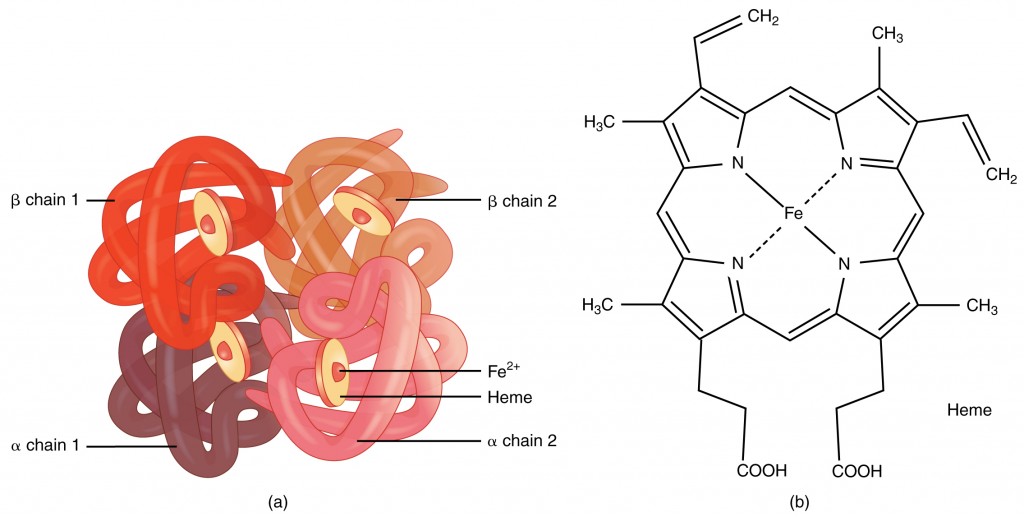 The answer can be explained by understanding the following: the role and composition of blood, the structure and function of hemoglobin, and the spectral properties of hemoglobin.
The answer can be explained by understanding the following: the role and composition of blood, the structure and function of hemoglobin, and the spectral properties of hemoglobin.
The Role and Composition of Blood: Blood is a fluid that connects all parts and organs of body and transports oxygen, nutrients and other agents, such as hormones, which are essential for body functions. Blood also takes excretory products from tissues to kidneys for their excretion from the body. Blood is made of different types of cells, each of which have different functions such as in defense, body immunity and in clotting of blood.
One of the several cell types found in blood are the red blood cells (RBCs). In fact, the red color of blood is also due to the red color of RBCs. The red color of RBCs, in turn, is due to a complex formed by the bonding of iron and a kind of protein called globulin protein. The complex is called hemoglobin.
Structure and Function of Hemoglobin
Hemoglobin combines with oxygen in the lungs to form oxy-hemoglobin and transport oxygen to all tissues in the body. When in tissues, oxygen is released from hemoglobin and the carbon dioxide formed in the blood is absorbed by hemoglobin to form carbaminohemoglobin and then transported back to lungs where carbon dioxide is released or deoxygenated from carbaminohemoglobin. Hemoglobin in RBCs continues this cycle of transporting oxygen and carbon dioxide as a continuous process during the process of respiration, involving inhalation and exhalation.
The cytoplasm of RBCs is rich in hemoglobin and it is the single cause for the red color of blood. RBCs are cells which during the process of development lose their nucleus. This is an arrangement to make available more room for hemoglobin within the RBCs. Hemoglobin makes up about 96% of the RBCs dry weight. It has an oxygen-binding capacity of 1.34 mL oxygen per gram which gives it a high capacity to carry oxygen. Each molecule of hemoglobin can bind four molecules of oxygen.
Spectral Properties of Hemoglobin
Hemoglobin consists of protein subunits, made of globin molecules. Each globin molecule is made of folded chains of a large number of different amino acids, the sequence of which determines the characteristic properties and function of hemoglobin molecule. The hemoglobin production is regulated by genes and there is more than one gene involved in this process. Hemoglobin formation is a complex process during the early development of RBCs in the bone marrow. The loss of nucleus in RBCs is an adaptive process to provide more space available in RBCs to house greater quantity of hemoglobin.
In the hemoglobin there are four globins and a heme group which is strongly bounded to globin. Though carbon dioxide is carried by hemoglobin, it does not compete with oxygen for the iron-binding positions but is bound to the protein chain of the structure. While the oxygenated blood has a bright red color, the deoxygenated blood carrying carbaminhemoglobin has a distinct dark red color.
Appearance of the color of any object depends upon the principle of the absorption and reflection of the color by the object in the visible light spectrum. Eyes can perceive light only in the visible spectrum of light of the wavelength ranging between 390nm-700nm. Hemoglobin provides the blood a red color because it absorbs all colors but reflects the red color of the visible spectrum of light. The absorption spectra of oxygenated hemoglobin differ from deoxygenated hemoglobin. The oxy form has significantly lower absorption of 660 nm wavelength giving it a bright red color while deoxygenated hemoglobin has a slightly higher absorption at 840 nm giving it a dark red color.










Leave a Reply